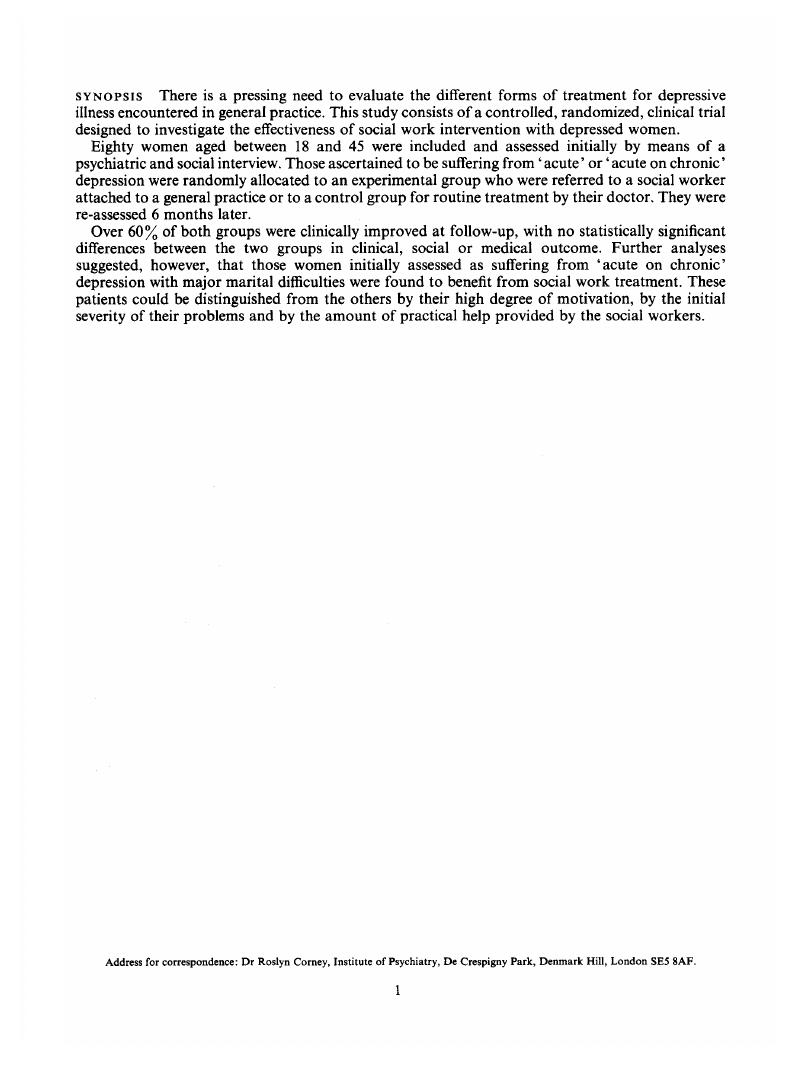Crossref Citations
This article has been cited by the following publications. This list is generated based on data provided by Crossref.
Blacker, C. V. R.
and
Clare, A. W.
1987.
Depressive Disorder in Primary Care.
British Journal of Psychiatry,
Vol. 150,
Issue. 6,
p.
737.
Sheppard, M.G.
1987.
Dominant images of social work: a British comparison of general practitioners with and without attachment schemes.
International Social Work,
Vol. 30,
Issue. 1,
p.
77.
Irving, Jill
1988.
Counselling in General Practice: The Need for Provision of Formally Structured and Funded Counsellor Attachment Schemes in Primary Care.
Counselling Psychology Review,
Vol. 3,
Issue. 1,
p.
4.
Corney, R. H.
1989.
Rehabilitation in der Psychiatrie.
p.
79.
Coyne, James C.
1989.
Comprehensive Handbook of Cognitive Therapy.
p.
227.
Scott, J.
Moon, C. A. L.
Blacker, C. V. R.
and
Thomas, J. M.
1994.
A. I. F. Scott & C. P. L. Freeman's “Edinburgh Primary Care Depression Study”.
British Journal of Psychiatry,
Vol. 164,
Issue. 3,
p.
410.
Dewa, Carolyn S
Hoch, Jeffrey S
and
Goering, Paula
2001.
Using Financial Incentives to Promote Shared Mental Health Care.
The Canadian Journal of Psychiatry,
Vol. 46,
Issue. 6,
p.
488.
Bower, P
Rowland, N
Mellor Clark, J
Heywood, P
Godfrey, C
Hardy, R
and
Bower, Peter
2002.
Cochrane Database of Systematic Reviews.
Terluin, Berend
van Dijk, Dela
van der Klink, Jac
Hulshof, Carel
and
Romeijnders, Arnold
2005.
De behandeling van overspanning.
Huisarts en Wetenschap,
Vol. 48,
Issue. 1,
p.
981.





